Exploring the Significance of 80s Music
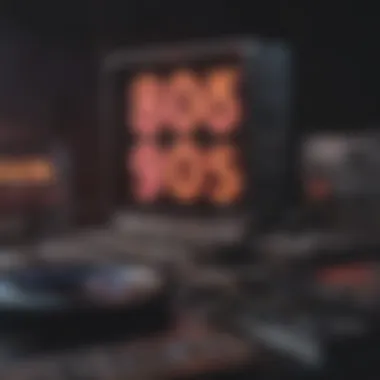
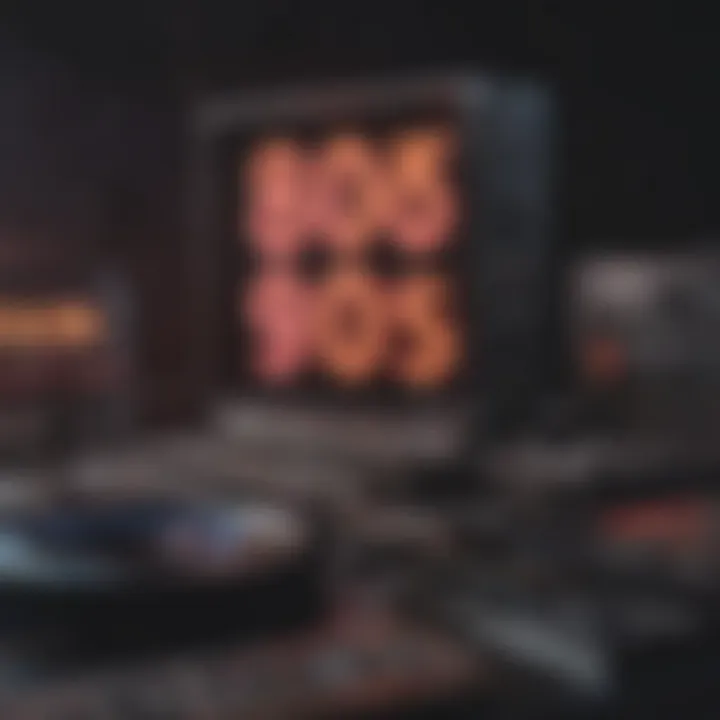
Intro
The 1980s marked a pivotal era in the evolution of music, characterized by a diverse array of genres, technological advancements, and cultural shifts. During this decade, artists and bands pushed musical boundaries, creating sounds that resonated deeply with a generation. From the enchanting melodies of pop icons to the gritty undertones of emerging rock bands, the music of the 80s shaped and reflected the societal dynamics of its time.
This article aims to explore the significant elements of 80s music, highlighting not only the artists who became cultural icons but also the themes and innovations that defined the soundscape of this remarkable decade. Through a comprehensive analysis of notable songs and albums, we can appreciate how these auditory creations continue to influence modern music.
Artist Profile
Biography and Background
The 1980s featured a multitude of influential artists, each contributing uniquely to the fabric of music. Figures like Madonna, Michael Jackson, and Prince rose to prominence, becoming household names. Their backgrounds often play a crucial role in understanding their artistry.
- Madonna, born in Michigan, faced early struggles before breaking into the music scene with her distinctive style and sound.
- Michael Jackson, often referred to as the King of Pop, began his career as a child star in the Jackson 5 and evolved into a revolutionary figure in music and dance.
- Prince, with roots in Minnesota, blended rock, funk, and pop to create an eclectic sound that defied traditional categorization, setting new standards for artistic expression.
Major Influences and Inspirations
Influences for these artists came from various sources, including earlier music styles, cultural movements, and personal experiences.
- Madonna drew inspiration from disco and punk, shaping her unique fashion and musical identity.
- Michael Jackson was influenced by Motown greats and the evolving landscape of rock and pop, allowing him to pioneer groundbreaking music videos.
- Prince's work was shaped by a mix of funk legends and rock musicians, creating a sound that was distinctively his own yet broadly appealing.
Song Analysis
Theme and Lyrics Breakdown
In the 80s, lyrical content began to explore more complex themes, reflecting societal issues, personal struggles, and the exuberance of youth. Many songs tackled topics such as love, identity, and the impact of technology.
For instance, Madonna's "Like a Prayer" delves into themes of spirituality and personal conflict, while Michael Jackson's "Man in the Mirror" emphasizes social responsibility.
Instrumentation and Composition
Instrumentation also transformed dramatically during this time. The introduction of synthesizers and drum machines played a central role in defining the era's sound.
- Synth-pop emerged as a staple genre, characterized by catchy melodies and electronic beats.
- Rock bands began incorporating elements of new wave, using synthesizers to complement traditional guitar riffs.
Understanding these elements offers insight into why 80s music remains relevant today. It set the groundwork for numerous genres and continues to inspire artists across the globe.
Music from the 1980s encapsulates a moment in time that was about rebellion, innovation, and the celebration of individuality.
By studying the music of this era, enthusiasts can appreciate the intricacies involved in the creation of sounds that changed the landscape forever.
Preamble to 80s Music
The exploration of 1980s music transcends mere nostalgia; it represents a significant cultural milestone that influenced various spheres, including fashion, film, and societal norms. This section serves as a primer for understanding the complexities of a decade that shaped modern music. The diversity of sounds and styles emerging during this period forged a distinct identity for music lovers worldwide.
Defining the 80s Era in Music
The 1980s was characterized by a notable evolution in musical genres. This era marked the proliferation of synth-driven sounds, notably through synthesizers and drum machines. Genres such as New Wave, Hip-Hop, and various forms of Pop and Rock became defining features of this decade. New Wave artists, for example, integrated elements of punk rock and electronic music, creating a sound that was both accessible and avant-garde.
Understanding the 80s requires recognizing its fluid boundaries. Music was no longer just a backdrop to social events or a medium for expression; it became a cultural revolution. This mixture of genres and styles brought forth legendary artists who not only dominated the charts but also shaped societal viewpoints.
Cultural Context of the 1980s
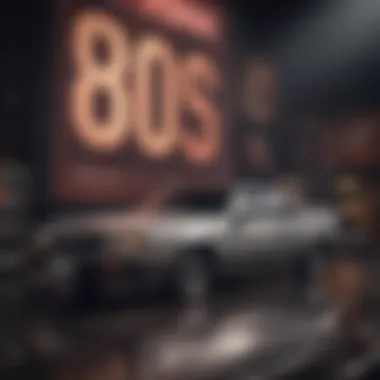

Examining the cultural context of the 1980s reveals significant influences that shaped the music of the time. This decade saw the rise of consumer culture, driven largely by advancements in technology and media. The expansion of radio formats, along with the emergence of cable television and the launch of MTV in 1981, changed how artists reached their audience.
Moreover, socio-political factors played a crucial role. The Cold War and various social movements informed the lyrical content of many 80s songs. Artists began to address issues such as inequality, war, and personal freedom more directly in their music. Notable examples include songs like "Fight the Power" by Public Enemy, which highlight societal issues that resonate even today.
Genres of the 80s
The 1980s were a vibrant period for music, characterized by a plethora of genres that emerged and transformed the soundscape of the decade. Each genre contributed uniquely to the culture, reflecting social issues, personal emotions, and the technological advancements of the time. Understanding these genres is essential for grasping the complex relationship between music and the society that birthed it.
The Rise of New Wave
New Wave music, distinguishably marked by its eclectic blend of pop and punk influences, gained tremendous popularity in the 1980s. Bands like Duran Duran and The Human League pushed the boundaries of traditional rock music, incorporating synthesizers and innovative production techniques. This genre was not just about the sound; it also embraced a specific aesthetic, characterized by bold fashion choices and vibrant music videos.
New Wave artists often experimented with styles that challenged norms and encouraged self-expression. Many songs from this genre tackled themes such as alienation and empowerment, resonating strongly with the youth of the time.
The Emergence of Hip-Hop
Hip-Hop began to come into its own in the 1980s, marking a significant cultural shift. Artists like Grandmaster Flash and Run-D.M.C. not only captured the experiences of their communities but also paved the way for future generations. The genre was rooted in rhythmic vocal style, known as rapping, which conveyed powerful messages about societal issues.
This rise was also marked by the incorporation of sampling—using snippets of existing records to create fresh sounds. This practice expanded the musical palette for artists, leading to diverse subgenres like gangsta rap and conscious rap, which were impactful in addressing social injustice and personal narratives.
Pop Music Dominance
In the 1980s, pop music reached unprecedented levels of popularity, defined by artists like Madonna and Michael Jackson. Their ability to create catchy hooks, combined with memorable choreography, propelled them to global stardom. Pop music became a central cultural force, penetrating mainstream media and obtaining significant airtime on radio stations and MTV.
The decade showcased the power of the music video as a marketing tool, with extravagant visuals enhancing the music's appeal. As listeners sought more than just sound, these artists crafted a full sensory experience that remains influential in contemporary pop culture.
Heavy Metal and Rock Innovations
Heavy Metal saw a renaissance in the 1980s, with bands like Metallica and Iron Maiden bringing complexity and intensity to their music. The genre was characterized by loud guitars, aggressive rhythms, and powerful lyrics, often delving into themes of rebellion and existentialism.
Simultaneously, the rock scene was rich in innovation. Incorporation of new technologies, such as synthesizers and digital effects, allowed bands like U2 to develop a more expansive sound. This period emphasized the importance of musicianship and performance, with iconic live shows leaving a lasting impact on fans and the industry.
In summary, the diversity of genres that flourished in the 1980s played a crucial role in defining the musical landscape. Each genre didn't just appeal to public taste but also served as a reflection of the societal currents and sentiments of the time. The significance of these genres continues to resonate in modern music, showcasing their lasting legacy.
Influential Artists and Bands
The 1980s was a pivotal decade in music, characterized by the emergence of artists who not only changed the sound of popular music but also redefined the cultural landscape. These influential artists and bands played a significant role in shaping the music scene of the time. Their contributions set the stage for modern genres and continue to resonate with audiences today. Understanding these figures offers insight into the the evolution of music and the dynamic social environment of the 1980s.
The Impact of Michael Jackson
Michael Jackson, known as the "King of Pop," was a groundbreaking figure in 80s music. His album Thriller became the best-selling album of all time, showcasing a wide range of musical styles from pop to rock and funk. Michael's innovative music videos, especially for tracks like Billie Jean and Beat It, elevated the role of visual storytelling in pop music. This impact was profound; he pushed boundaries in music production and performance. Notably, Jackson's ability to blend genres made his music widely appealing, helping to break down racial barriers in the industry. He transformed the way music was consumed, influencing artists for decades to come.
Madonna's Revolutionary Influence
Madonna emerged as an icon of the 80s, effectively shaping the pop music landscape. Her debut album, Madonna, and follow-up Like a Virgin introduced a new image of female empowerment in music. Through her fearless approach to lyrics and performance, she challenged societal norms and expectations of women in entertainment. Madonna's ingenious blend of pop, dance, and rock provided a template that many artists would follow. Her use of visual media, particularly music videos, as a form of expression set a new standard for marketing music. She remains a key figure in discussions about feminism in the music industry.
Prince and Genre-Bending Innovation
Prince was another revolutionary artist of the 1980s, known for his eclectic style that fused rock, funk, and R&B. His album Purple Rain not only solidified his status as a music legend, but also demonstrated his ability to cross genre lines effortlessly. Prince's approach to songwriting and production was distinct, highlighted by his use of unconventional instruments and innovative soundscapes. His androgynous identity and bold performances challenged traditional gender roles in music. This multi-faceted approach has inspired countless artists and continues to impact musicians across various genres today.
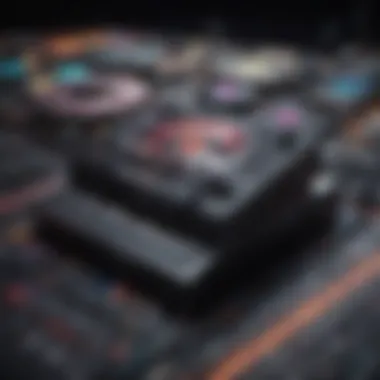
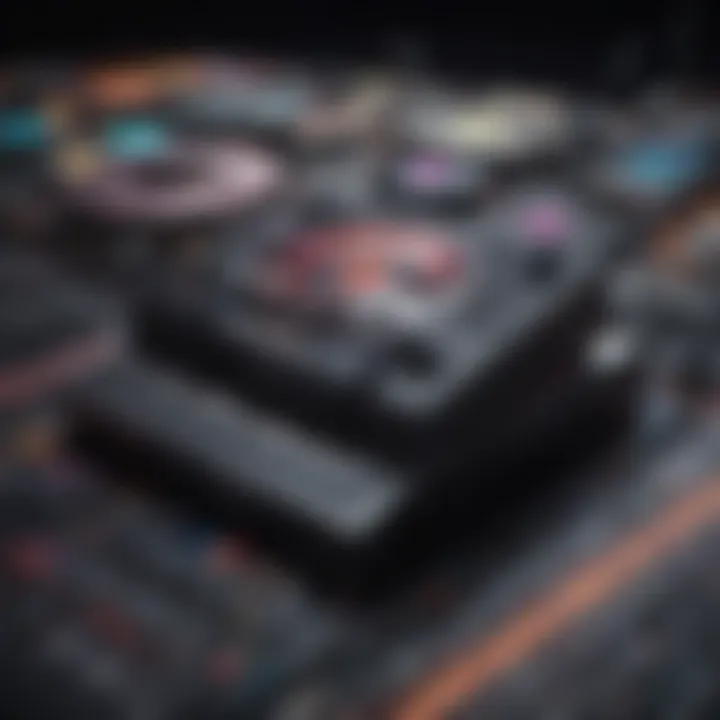
The Legacy of U2
U2 emerged from Ireland with a unique sound that resonated globally. Their mix of rock with spiritual and political themes in songs like Sunday Bloody Sunday highlighted their willingness to tackle difficult issues head-on through music. U2's capacity to evolve while staying relevant is attributed to their commitment to authenticity. Their ability to integrate technology into live performances, particularly through their tours in the 80s, set the standard for what concerts could achieve. The band’s engagement in social and political causes further established them as artists who strived for change, making them influential figures well beyond the 80s.
Technological Advancements in Music Production
The 1980s marked a significant shift in the landscape of music production, fostering innovations that transformed how music was created, distributed, and consumed. These advancements were crucial not only for artists but influenced the entire music industry. The period saw an influx of new tools and technologies that allowed musicians to explore sound in unprecedented ways.
Synthesizers and Electronic Instruments
Synthesizers became the hallmark of 80s music, as they allowed artists to create a vast array of sounds. The Yamaha DX7, for example, was revolutionary, popularizing FM synthesis. Artists like Depeche Mode and OMD utilized these instruments to produce ethereal soundscapes. This democratization of sound meant that complex compositions could be achieved with relatively little budget.
Furthermore, electronic instruments enabled the blending of genres. Pop, rock, and new wave intersected through these technologies. The Roland TR-808 drum machine also defined the rhythm of countless hits. Its distinctive beats became a staple sound, fostering various musical styles. The versatility of synthesizers allowed musicians to experiment boldly, influencing the musical direction that would last beyond the decade.
MTV and the Music Video Revolution
The creation of MTV in 1981 revolutionized the music industry by introducing music videos as a fundamental medium for promotion. Artists quickly embraced this new platform, understanding the potential of visual storytelling in music. The aesthetic appeal of a well-crafted music video became almost as important as the song itself.
Notably, the channel showcased artists like Michael Jackson and Madonna, whose videos became iconic cultural artifacts. Many music videos acted as a launching pad for musicians and provided a more engaging experience for the audience. This visual element augmented the listening experience, catering to the burgeoning youth culture.
"Music videos helped define the artists of the 80s, making them not only musicians but also visual icons."
As artists competed for airtime on MTV, creativity flourished, pushing boundaries in both musical and visual artistry.
The Role of Cassette Tapes and Radio
During the 1980s, cassette tapes became an essential part of music consumption. They offered music lovers the ability to create mixtapes and share music with friends. This format provided a sense of personalization that vinyl records could not. Small, portable, and easy to duplicate, cassette tapes revolutionized how music was shared and disseminated among fans.
Radio also played a pivotal role during this time, with FM stations gaining popularity due to improved sound quality. Stations catered to emerging genres like hip-hop and new wave, broadening the reach of varied artists. New formats and media were crucial in allowing underrepresented styles to flourish.
As a result, artists could gain exposure through airplay, leading to increased record sales and concert attendance. The combination of cassette tapes and radio significantly contributed to the cultural fabric of the 80s, allowing music to permeate every aspect of daily life.
Themes and Lyrics in 80s Music
The lyrics and themes present in 80s music serve as a lens through which we can understand the cultural context of the decade. This period was marked by significant social changes, technological advancements, and a youthful desire for expression. Songs from this era often encapsulated the complexity of human experiences, ranging from personal feelings of love and heartbreak to broader societal issues.
One of the most appealing aspects of 80s music is its ability to reflect the sentiments of a generation. By examining the themes prevalent in this music, we can better appreciate not only the artistry behind the songs but also their influence on listeners.
Youth and Rebellion
The concept of youth and rebellion permeated many tracks in the 80s. Artists like Billy Idol and Joan Jett embraced this theme, tapping into the disillusionment felt by many young people during this time. Their music often conveyed a yearning for freedom and an escape from societal constraints.
The rise of punk rock and new wave genres prominently featured themes of rebellion. Songs like "Rebel Yell" by Billy Idol and "I Love Rock 'n' Roll" by Joan Jett became anthems for those wishing to defy conventional norms.
This exploration of youth culture reflects a broader desire for identity and agency. Young people found resonance in these lyrics, allowing them to connect with their emotions and experiences. The tracks encapsulating youth and rebellion also offered a sense of community, bringing like-minded individuals together.
Love and Relationships


Love, in its myriad forms, was a dominant theme in 80s music. From the tender ballads of Whitney Houston to the upbeat pop hits of Cyndi Lauper, the decade produced songs that encapsulated the highs and lows of romance. The lyrics ranged from the euphoric feelings of new love to the heart-wrenching pain of heartbreak.
For instance, Whitney Houston's "Greatest Love of All" emphasizes self-love, while Cyndi Lauper's "Time After Time" explores commitment and loyalty in relationships. These songs resonated with audiences on both personal and relatable levels.
Furthermore, this focus on love enabled artists to broaden the emotional spectrum in pop music. It paved the way for future generations of musicians to keep exploring complex emotional matters in their own work.
Political Commentary and Social Issues
In the backdrop of a decade marked by significant political and social changes, many artists used their lyrical prowess to address pressing issues. Music became a medium for political commentary. Artists like Bruce Springsteen and U2 tackled subjects such as war, poverty, and injustice. Their lyrics often called for unity and social change.
For example, U2's "Sunday Bloody Sunday" confronted the violence in Northern Ireland, while Springsteen's "American Skin (41 Shots)" addressed racial tensions in America. These songs encouraged listeners to reflect on societal problems and took on an activist tone.
In this sense, the music of the 80s acted not just as entertainment but as a vehicle for commentary and change. Through their lyrics, artists fostered a greater awareness of issues that were critical to society during that time, leaving a lasting impact on future generations.
The Enduring Legacy of 80s Music
The enduring legacy of 80s music lies not only in its unique sound but in how it reshaped the landscape of popular culture. This era gave rise to a diverse range of styles and significant innovations that continue to resonate today. Music from this decade set the stage for the evolution of genres and artists who shaped the soundscape of modern music. Moreover, it established influential trends that are still prevalent in various forms now.
Influence on Modern Artists
Many modern artists draw inspiration from the 1980s. Genres such as synth-pop, new wave, and hip-hop have influenced contemporary sounds. Notable musicians like Lady Gaga, Bruno Mars, and The Weeknd incorporate elements from 80s music into their work. The vibrant use of synthesizers and catchy melodies remains evident. Moreover, some artists openly pay homage to 80s aesthetics through fashion and visuals in their music videos.
Artists today often cite icons like Madonna or Michael Jackson as pivotal influences. Their ability to merge music with compelling visuals has transformed music delivery, pushing current artists towards integrated artistic expression. The resurgence of retro sounds also reflects how the 80s continue to inspire innovation and creativity.
Cultural References in Today's Media
Cultural references drawn from the 80s permeate today's media. Films, television shows, and commercials often evoke this era to engage audiences through nostalgia. Iconic movies like "Stranger Things" and "Ready Player One" heavily reference 80s music and its cultural backdrop.
Moreover, advertising campaigns utilize 80s tracks to capture attention and invoke feelings of nostalgia. The influence is observable in countless examples, such as the return of fashion trends from that decade, indicating a revival in how 80s culture is celebrated. This ongoing incorporation reinforces the idea that 1980s music is not just a relic but a living part of contemporary culture.
The Resurgence of 80s Nostalgia
The resurgence of 80s nostalgia is evident in various aspects of pop culture today. From themed events to merchandise revival, the decade's iconic imagery and sounds are being embraced once again. Music festivals frequently spotlight 80s bands, fostering a connection between generations.
Additionally, social media platforms have played a significant role in revitalizing interest in 80s music. Hashtags and challenges that revolve around 80s hits have become popular. This interaction signifies a broader revival, encouraging new listeners to explore the sounds that defined a generation.
Ending
The significance of 80s music cannot be overstated. This decade not only reshaped the music landscape but also left an indelible mark on global culture. 80s music served as a reflection of social changes and technological advancements that influenced everyday life. By analyzing the contributions of various genres and artists, we see how these elements helped establish a framework for future music.
Summarizing the Impact of 80s Music
80s music introduced innovative sounds that still resonate today. The era gave birth to genres such as New Wave and Hip-Hop, expanding the boundaries of what music could be. Iconic artists like Michael Jackson and Madonna not only dominated the charts but also pushed artistic boundaries in music videos and live performances. Their influence can be seen in modern artists, who often draw inspiration from the aesthetics and themes of the 80s.
Moreover, the presence of political and social themes in the lyrics highlights how music served as a platform for addressing crucial issues. Songs related to youth rebellion, love, and political commentary opened dialogues that remain relevant. These elements indicate that 80s music was not just entertainment but also a powerful communication tool.
In summary, the 80s crafted a unique musical identity that introduced a wealth of creativity. The decade’s impact is visible in the sound and structure of today’s music, creating a continuum that links past and present.
Future Directions in Music Studies
Looking forward, music studies must continue to explore the rich legacy of the 80s. There is room for deeper investigations into how this decade influenced various cultural movements around the world. Remembering the political context of the 80s and its connection to its music can yield valuable insights for students of today.
Additionally, the evolving landscape of technology suggests new avenues for research. The fusion of digital platforms with 80s classics has opened discussions related to sampling, remixing, and reinterpreting these tracks in modern contexts. Scholars may also consider how the nostalgia surrounding the 80s informs current music trends and consumer behavior.
In pursuing this, researchers can continue to highlight the significance of 80s music and its unsung contributions to popular culture. Tapping into the emotional and cultural depths of this fascinating decade can yield fruitful discussions and inspire future generations of musicians.







